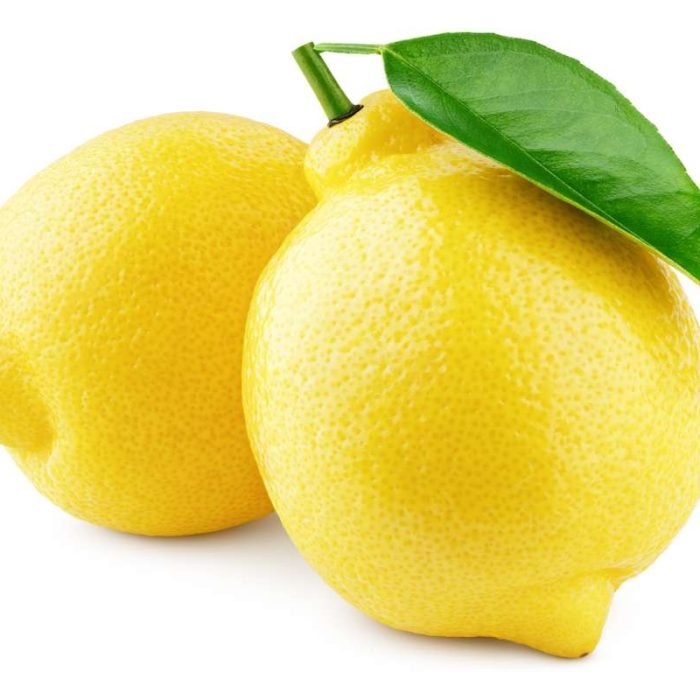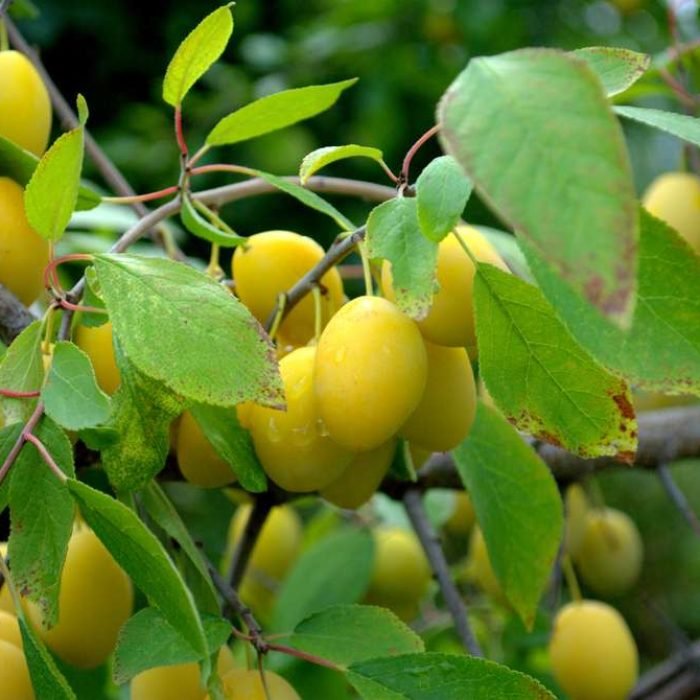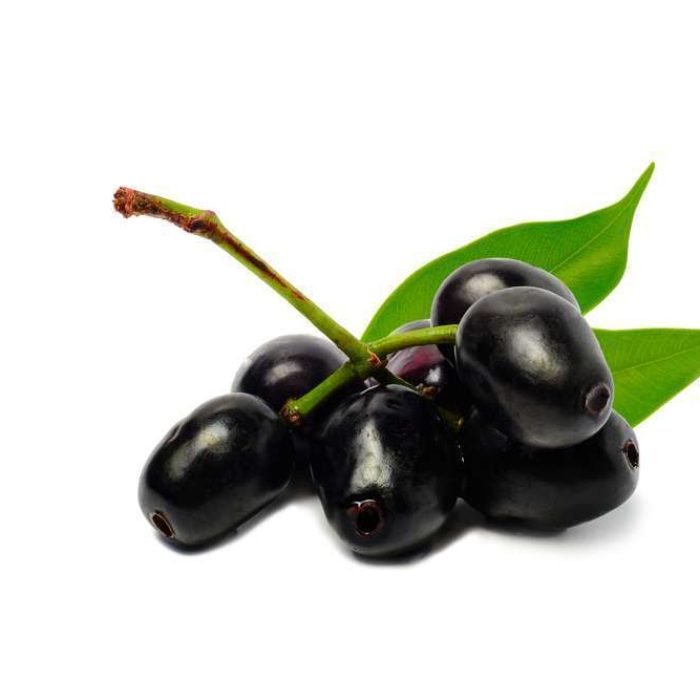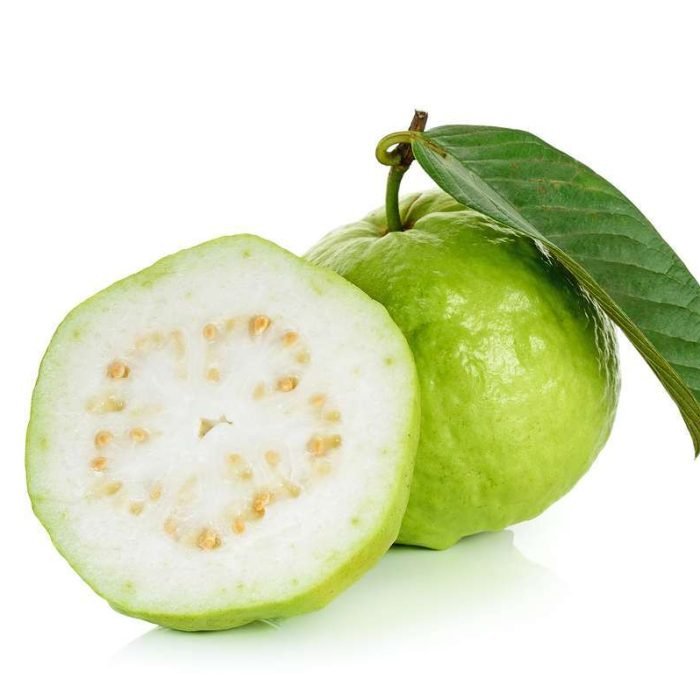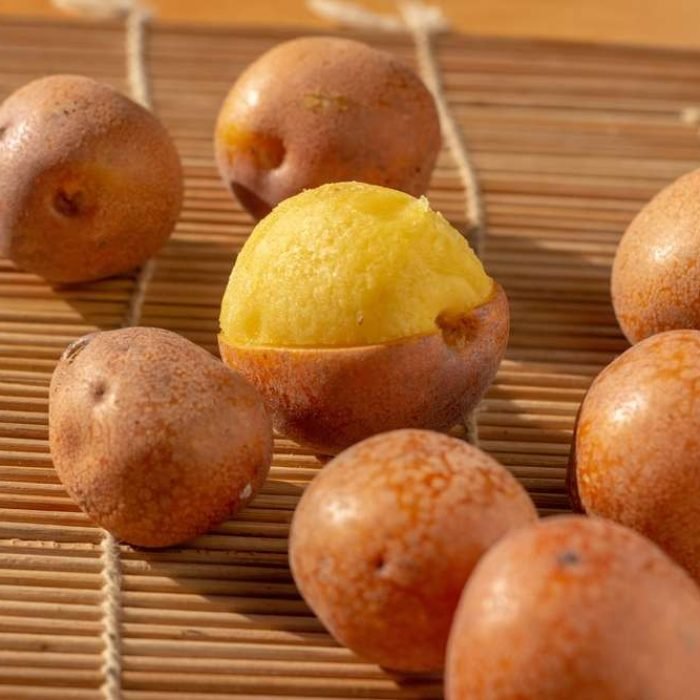PawPaw (Fruit)
( Papaya or papaw )
- Carica papaya
- Tree Type: Evergreen

General Information
The papaya is a small, sparsely branched tree, usually with a single stem growing from 5 to 10 m tall, with spirally arranged leaves confined to the top of the trunk. The lower trunk is conspicuously scarred where leaves and fruit were borne. The leaves are large, 50–70 cm in diameter, deeply palmately lobed, with seven lobes. All parts of the plant contain latex in articulated laticifers. Papayas are dioecious. The flowers are five-parted and highly dimorphic; the male flowers have the stamens fused to the petals. The female flowers have a superior ovary and five contorted petals loosely connected at the base. Male and female flowers are borne in the leaf axils; the male flowers are in multiflowered dichasia, and the female ones are in few-flowered dichasia. The pollen grains are elongated and approximately 35 microns in length. The flowers are sweet-scented, open at night, and wind- or insect-pollinatedDescription
The fruit is a large berry about 15–45 cm long and 10–30 cm in diameter. It is ripe when it feels soft (as soft as a ripe avocado or softer), its skin has attained an amber to orange hue and along the walls of the large central cavity are attached numerous black seeds.Cultivation
Papaya plants grow in three sexes: male, female, and hermaphrodite. The male produces only pollen, never fruit. The female produces small, inedible fruits unless pollinated. The hermaphrodite can self-pollinate since its flowers contain both male stamens and female ovaries. Almost all commercial papaya orchards contain only hermaphrodites. The papaya is now cultivated in most tropical countries. In cultivation, it grows rapidly, fruiting within 3 years. It is, however, highly frost-sensitive, limiting its production to tropical climates. Temperatures below −2 °C (29 °F) are greatly harmful if not fatal. In Florida, California, and Texas, growth is generally limited to southern parts of those states. It prefers sandy, well-drained soil, as standing water can kill the plant within 24 hoursUses
The unripe green fruit is often eaten cooked due to its latex content. The ripe fruit of the papaya is usually eaten raw, when ripe, without skin or seeds. The black seeds of the papaya are edible and have a sharp, spicy taste. The raw fruit can be ripened by placing in the sun. The young leaves, flowers and stems can be prepared by boiling with changes of water. It is also used to make various food dishes, jam, and juice. In traditional medicine, papaya leaves have been used as a treatment for malaria, an abortifacient, a purgative, or smoked to relieve asthma.Toxicity and Allergies
Papaya releases a latex fluid when not ripe, possibly causing irritation and an allergic reaction in some people. Because the enzyme papain acts as an allergen in sensitive individuals, meat that has been tenderized with it may induce an allergic reaction.Share:
- Kingdom: Plantae
- Clade 1: Tracheophytes
- Clade 2: Angiosperms
- Clade 3: Eudicots
- Clade 4: Rosids
- Order: Brassicales
- Family: Caricaceae
- Genus: Carica


